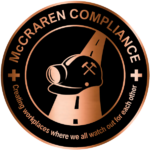 Washington — Temporary hours-of-service exemptions and other regulatory relief for truckers during regional emergency declarations will be limited under a recently published Federal Motor Carrier Safety Administration final rule.
Washington — Temporary hours-of-service exemptions and other regulatory relief for truckers during regional emergency declarations will be limited under a recently published Federal Motor Carrier Safety Administration final rule.
Published Oct. 13 and set to go into effect Dec. 12, the rule:
- Modifies the definition of “emergency” to clarify that emergency regulatory relief doesn’t apply to economic conditions caused by market forces, including material/supply shortages, labor strikes or driver shortages.
- Removes the definition of “emergency relief” and amends the definition of “direct assistance” to adopt the vital components of the former definition of “emergency relief.”
- Exempts drivers and motor carriers for 14 days – down from 30 – during regional emergency declarations issued by a governor, governor’s representative or FMCSA, and applies exemptions only from certain HOS regulations.
Presidential emergency declarations still will have 30-day exemptions and apply to current covered regulations, including those applicable to driver qualification requirements and vehicle inspections.
FMCSA declared and extended emergency relief to truckers during the COVID-19 pandemic.
In December, the agency solicited comments on a notice of proposed rulemaking.
“By limiting the scope,” FMCSA says, “today’s rule clarifies that the Federal Motor Carrier Safety Regulations not relevant to most emergency situations remain in effect while retaining the agency’s flexibility to tailor emergency regulatory relief to the specific circumstances of an emergency.”
McCraren Compliance can help you understand and comply with FMCSA, USDOT and ADOT and ensure your drivers and your vehicles operate safely and efficiently.
Call us Today at 888-758-4757 or email us at info@mccrarencompliance.com to schedule your free FMCSA Compliance Assessment.
Original article published by Safety+Health an NSC publication


